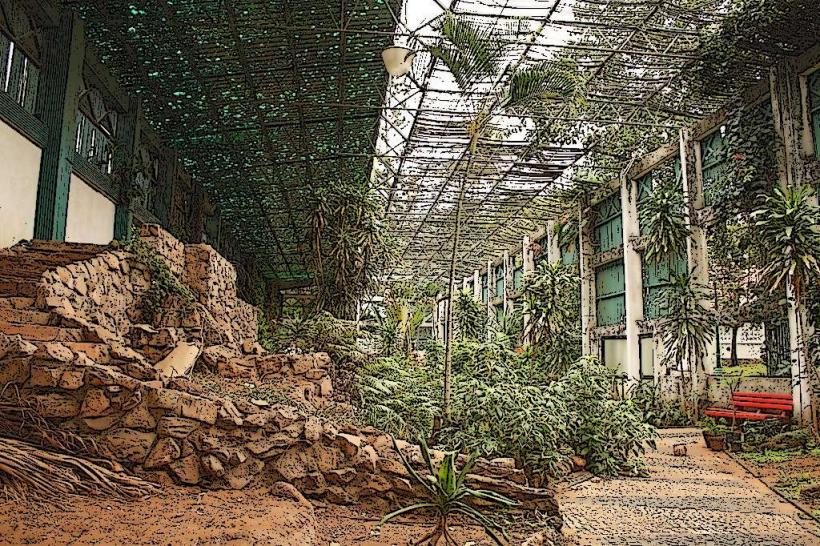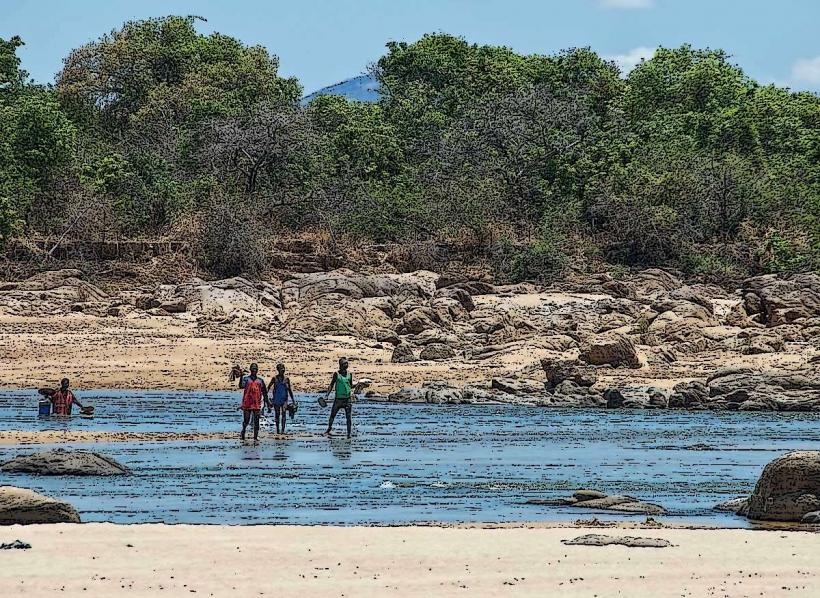Information
City: TunduruCountry: Tanzania
Continent: Africa
Tunduru is a town located in the Ruvuma Region of southern Tanzania, near the country's border with Mozambique. It serves as an administrative center for the district and is known for its proximity to natural resources, including forests, rivers, and mineral deposits.
Geographical Location
- Tunduru lies about 400 kilometers southwest of Mbeya, and it is an important transit point between southern Tanzania and Mozambique.
- The town is positioned in the Ruvuma River Basin, with the Ruvuma River flowing nearby, providing the area with fertile land for agriculture and a source of water for the local population.
Economy and Resources
- Agriculture: The area around Tunduru is primarily agricultural, with the cultivation of crops such as cassava, maize, rice, groundnuts, and tobacco. The fertile soils in the region support these crops, and farming is a significant part of the local economy.
- Forestry: Tunduru is surrounded by forests rich in timber, with some local communities involved in logging and related industries.
- Mining: Tunduru is also known for its mining industry, particularly the extraction of precious gemstones. The area is famous for the discovery of Tanzanite, though it is more commonly associated with the region around Arusha. Tunduru's proximity to mineral-rich areas contributes to the region's economic activities.
Tourism and Natural Attractions
- While Tunduru is not as well-known for tourism as other areas in Tanzania, it has some natural beauty and wildlife in its surroundings, such as the forests and the Ruvuma River.
- The region also has rich cultural heritage with a mix of ethnic groups, including the Makonde people, who are known for their art and traditional wood carving. Their intricate carvings have become famous worldwide and are highly regarded by collectors.
Transportation
- Tunduru is accessible by road, and the town serves as a hub for travel in southern Tanzania. It has access to the road networks that connect to other regions in Tanzania and nearby Mozambique.
- The nearest major city with air transport links is Mbeya, which has an airport serving domestic flights to and from Dar es Salaam, Arusha, and other Tanzanian cities.
Climate
- Tunduru experiences a tropical climate, with distinct wet and dry seasons. The rainy season occurs from November to April, and the dry season typically lasts from May to October.
- Temperatures in Tunduru are generally warm to hot year-round, with average highs in the range of 25°C to 35°C.
Challenges
- Infrastructure Development: Tunduru is still developing in terms of infrastructure, and some areas lack modern amenities, although there are ongoing efforts to improve roads and facilities.
- Environmental Concerns: The local environment faces pressures from logging, land clearing for agriculture, and the potential for unsustainable mining practices.
Nearby Attractions
- Selous Game Reserve (now part of the Nyerere National Park): Located to the northwest, this is one of Tanzania's largest and most famous wildlife reserves, home to a wide range of wildlife including elephants, lions, and rare bird species. Though it is further from Tunduru, it remains a major attraction for travelers in southern Tanzania.
- Ruvuma River: The Ruvuma River, which forms part of the border with Mozambique, is an important natural feature of the region. The river and surrounding forests provide habitat for a variety of wildlife and are a potential area for eco-tourism.
Cultural Aspects
- The Makonde people are one of the major ethnic groups in the region. They are renowned for their wood carving traditions, and their art is famous around the world. Visitors to the region can learn about their culture, buy local crafts, and explore the traditions of this unique community.
- The Makua and Yao people are also present in the region, contributing to the diverse cultural landscape.
Conclusion
Tunduru is a relatively quiet and lesser-known town in southern Tanzania, but it is strategically located between key agricultural and mining regions. Its natural resources, cultural diversity, and proximity to the Ruvuma River make it an interesting place for both economic activities and ecotourism. While it may not yet be a major tourist destination, its natural beauty, cultural heritage, and growing infrastructure have the potential to make it a more prominent location in the future.



